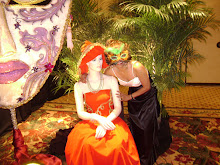Many of us who are graduates of the communication field can look back upon those college days when we were taught the many different theories in communication, be it interpersonal or organizational, and back then we wondered, “Do we really have to know all this theory stuff?” I can remember sitting in a class one day during the introductory class titled “Strategic Communication Theory” and as I listened to the professor, everything seemed puzzling and it seemed the world was just one orderly place until language was invented and things became chaotic. The chaos developed further as civilizations developed, cultures emerged and each saw, described and interpreted the world and human behavior through their own terministic screens. Hence today, communication is no small feat and today, as I look back to those graduate classes, I now value the theories I learned because now they make all the sense in helping me to organize and understand human communication and more so to drive effective communication.
So how does all this apply to Change Communication, you may ask? Look around you and examine all the instances where you were involved in or simply observed communications on change? How many times was the desired outcome achieved in a clear, coherent and inclusive manner? How many times did a stakeholder or an impacted group be brought into the communication loop too late or too early or did some group fall totally out of the process? How many times were there opposing views and misinterpretations or just simply bad explanations? These have happened time and time again because planning and understanding are two key elements of the communication process. Having a background in communication theory and putting the respective theory into practice is what can help us communicators to be successful and always vigilant in covering all the bases.
Driving change means understanding what you want to change and why you want that change; who gets affected and what will that affected group have to change or adapt. Has the affected group been engaged in conversations for their feedback and input? What is the breath and depth of the change and who are all the key stakeholders. Do these stakeholders change along the communication process and do we have a stakeholder map that guides us – that plan that we should have at the beginning of the process?
A great example of change communication failure and one that we can all identify with or at least know about is the current health care reform. Applying all the above questions to this situation, I am sure you can see the problem. So the president proposes health care reform and the public agrees that the health care system needs improving. That’s all good. But did that give the president and his policy makers the green light to simply go ahead, decide what the best solution is, write it up in a volume of more than a thousand pages and then they all take turn at trying to communicate what they have proposed? No wonder the outrage of the affected group is so dominant. The affected group cannot clearly or concisely tell what the proposed reform really is. There are distorted messages from different angles, and the affected group (the population) now feels that their health care is threatened. This is just one good reason why change communication is a delicate matter that needs its experts to guide it. How we drive change and how we communicate it go hand in hand, and first we must seek to understand the problem, its pros and cons, who are the affected parties, who are the major stakeholders and how would change be perceived at all levels. Engagement of stakeholders and affected groups are key. Most of all we must determine whether we are conducting a transformational or a radical change – which best fits the situation.
Stepping back to my opening on theories, if the Obama administration had any really good communication strategists and policy change specialists who understood the theories And dynamics of communication, perhaps they would have handled the whole health care reform differently and perhaps they would have taken a more transformational rather than a radical, time pressed approach; and not with the thinking that they can write the edict of health care reform in their high chambers and then announce it to the poor peasants who will be ever so grateful!!
Hurray to the population for standing up and seeking to understand what exactly it is they are being told and how exactly all of this will be sustained. Let the debate continue for this issue is not a one sided rhetoric; the affected group needs to be heard as well.
Unfolding before us in all these debates are the empty, non-directional government rhetoric and misunderstanding of the complex health care issue that the government pretends can be solved rather easily with a plan that did not involve perhaps some of the key stakeholders! Health care reform on such a grand scale, unless this is a dictatorship, cannot be radical and simply handed down. Like communication, change is also a two way conduit.
How Much Is People Engagement Really Worth?
10 years ago



